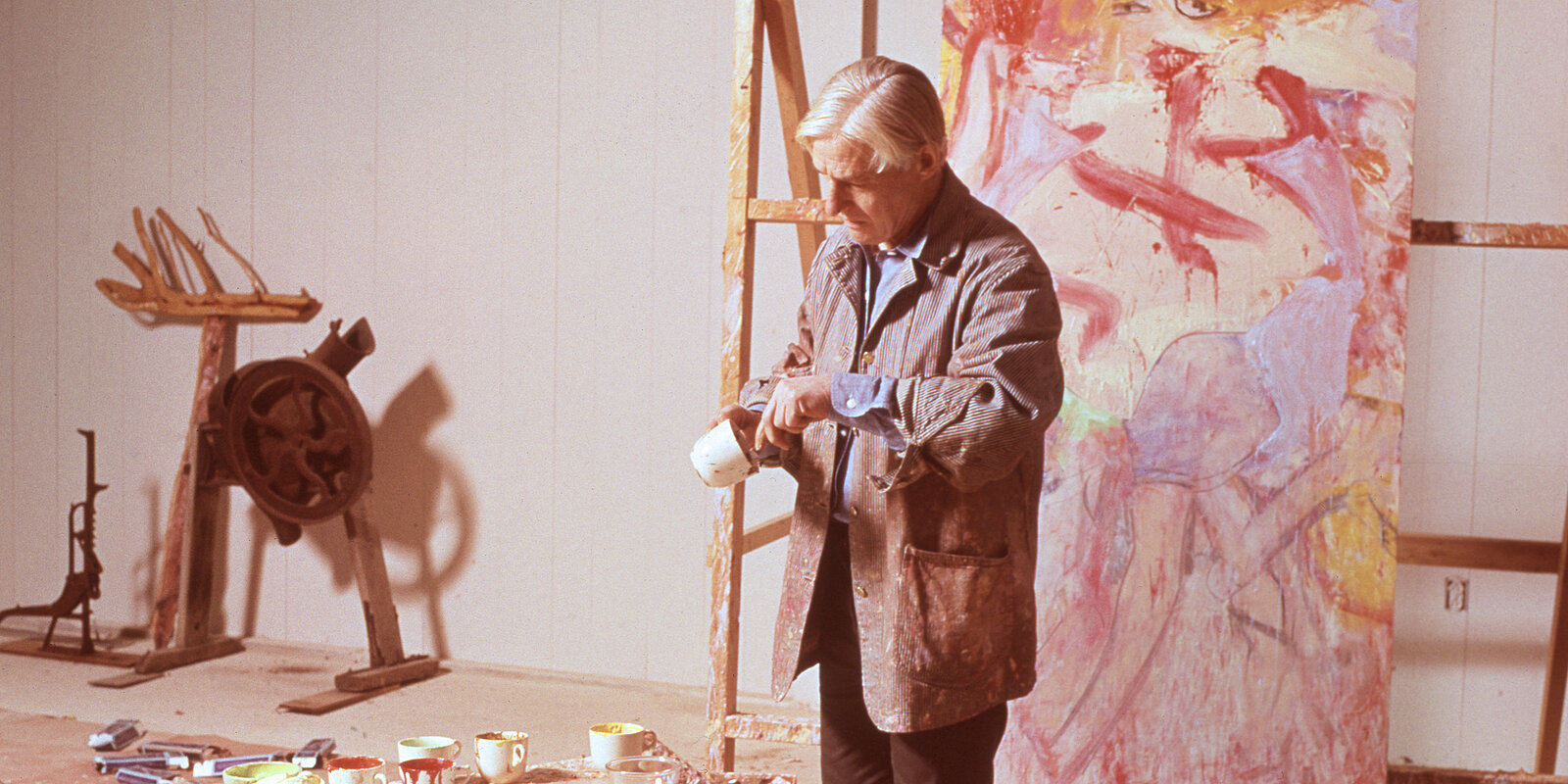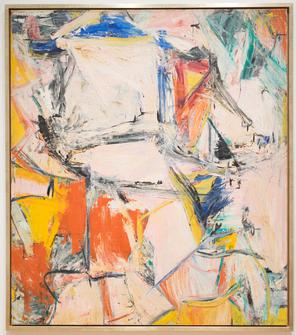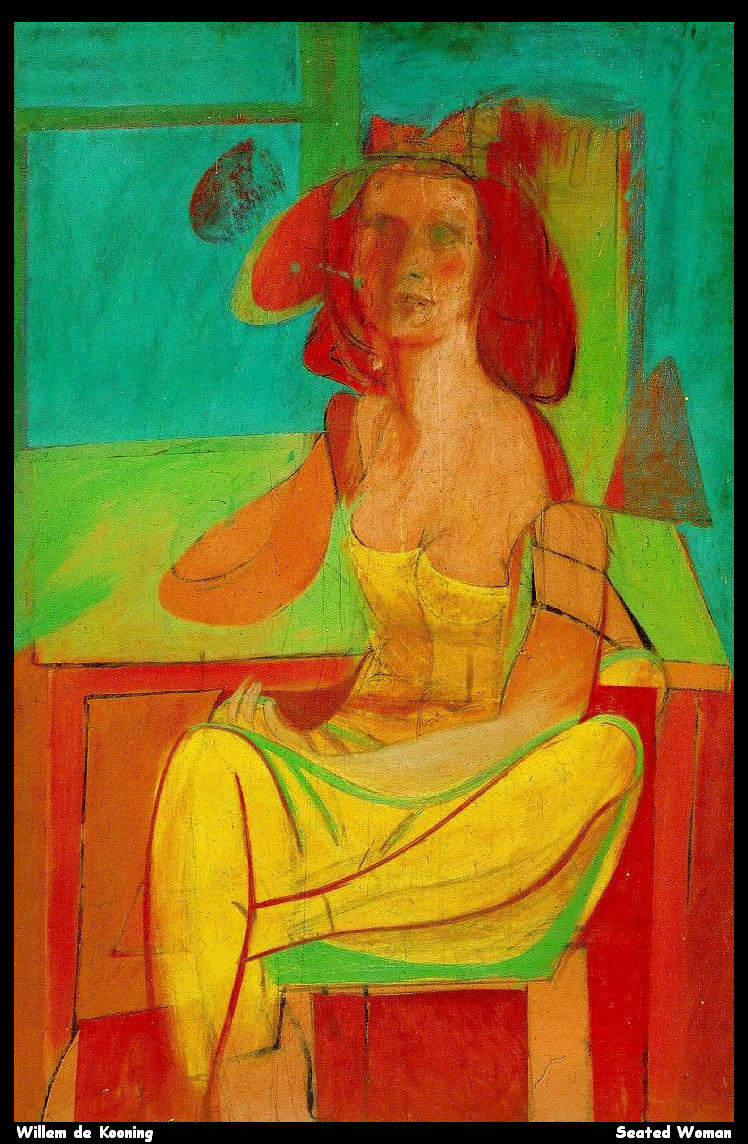

What seemed to some as stylistically reactionary, to others was clearly avant-garde.ĭe Kooning’s dramatic rise to prominence between 19 was only the first act in a remarkable artistic career. The Museum of Modern Art, New York, accepted de Kooning’s change in style as an advancement in his work and purchased Woman I (1950 – 1952) in 1953. He lost Greenberg’s support, yet Rosenberg remained convinced of his relevance.

His return to figuration was perceived by some as a betrayal of Abstract Expressionist principles, which emphasized abstraction. These women were types or icons more than portraits of individuals.
#Willem de kooning painter series
In 1953, he shocked the art world by exhibiting a series of aggressively painted figural works, commonly known as the “Women” paintings. During this period, de Kooning gained the support of Clement Greenberg and later Harold Rosenberg, the two foremost and rivaling critics in New York.ĭe Kooning’s success did not dampen his need for exploration and experimentation. This is arguably one of the most important paintings of the twentieth century. Shortly thereafter, in 1951, de Kooning made one of his first major sales when he received the Logan Medal and Purchase Prize from the Art Institute of Chicago for his grand-scale abstraction, Excavation (1950). This exhibition was essential to de Kooning’s reputation. The exhibition revealed densely worked oil and enamel paintings, including his now well-known black-and-white paintings. De Kooning said it plainly: “Picasso is the man to beat.” De Kooning and this group finally stole the spotlight and were responsible for the historic shift of attention to New York in the years following World War II.ĭe Kooning became known as an “artist’s artist” among his peers in New York and then gained critical acclaim in 1948 with his first one-man exhibition held at Charles Egan Gallery, at the age of forty-four. This movement was variously labeled “Action Painting,” “Abstract Expressionism” or simply the “New York School.” Until this time, Paris had been considered the center of the avant-garde, and the groundbreaking nature of Picasso’s contributions was frustratingly difficult to surpass for this group of highly competitive New York artists. By the late forties and early fifties, de Kooning and his New York contemporaries, including Jackson Pollock, Franz Kline, Robert Motherwell, Adolph Gottlieb, Ad Reinhardt, Barnett Newman and Mark Rothko, became notorious for rejecting the accepted stylistic norms such as Regionalism, Surrealism and Cubism by dissolving the relationship between foreground and background and using paint to create emotive, abstract gestures.
#Willem de kooning painter full
The experience convinced him to take up painting full time. In 1936, during the Great Depression, de Kooning worked in the mural division of the Works Project Administration (WPA). Nevertheless, after briefly working as a house painter, he established himself as a commercial artist and became immersed in his own painting and the New York art world, befriending such artists as Stuart Davis and Arshile Gorky.
#Willem de kooning painter movie
At that point, it was not the life of an artist that he was in search of rather, like many young Europeans, it was the movie version of the American dream (big money, girls, cowboys, etc.).

With the help of his friend, Leo Cohan, in 1926 he stowed away on a ship to the United States, settling in New York City in 1927.

Showing an interest in art from an early age, de Kooning was apprenticed to a leading design firm when he was twelve and, with its encouragement, enrolled in night school at the prestigious Rotterdam Academy of Fine Arts and Techniques (Academie van Beeldende Kunsten en Technische Wetenschappen te Rotterdam), which was renamed in his honor in 1998 as the Willem de Kooning Academie. Driven by an acutely perceptive mind, a strong work ethic, and persistent self doubt – coupled with the determination to achieve – the charismatic de Kooning became one of America’s and the twentieth century’s most influential artists. Willem de Kooning was born on April 24, 1904, into a working class family in Rotterdam, the Netherlands.


 0 kommentar(er)
0 kommentar(er)
